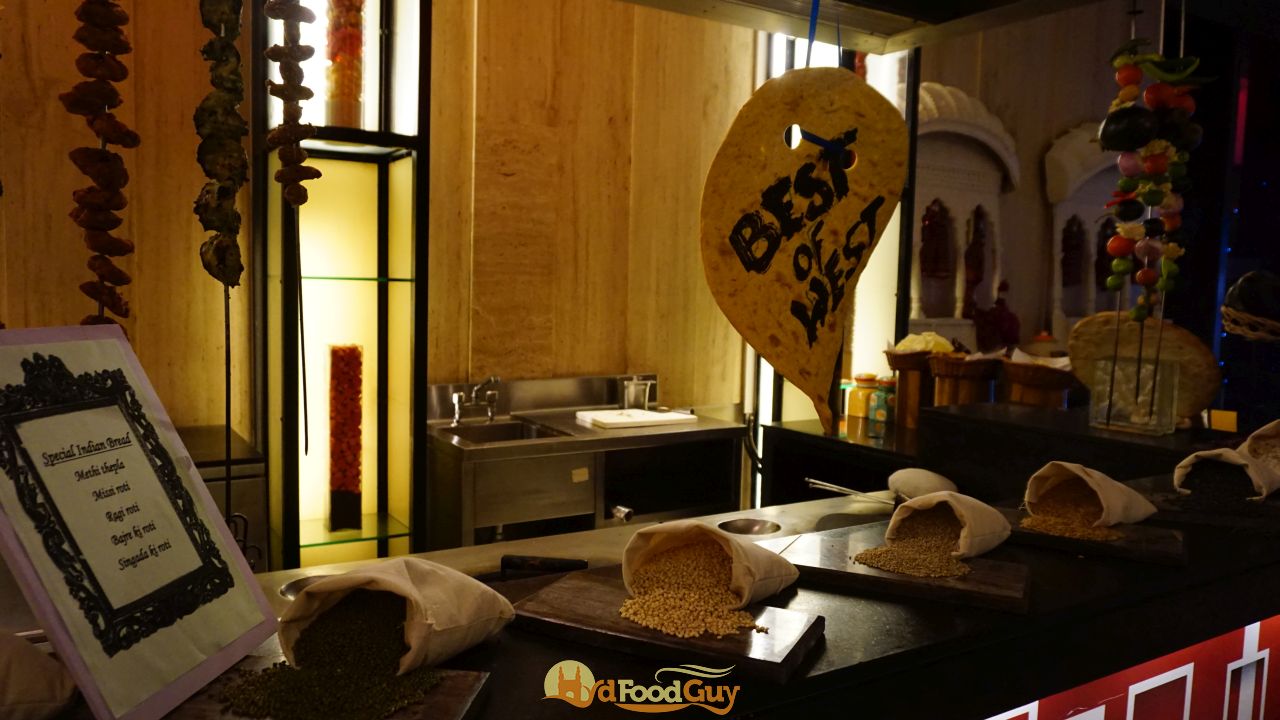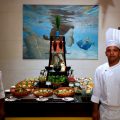The cuisine of any place tells a story. A story of the people, their culture, their history, and the geography. The cuisine of Morocco, which is situated on the North Western tip of Africa, has been shaped by the Berbers, the Arabs, the Sephardi Jews, and even French and sub Saharan influences. Moroccan cuisine will feel familiar to most Hyderabadis owing to our exposure to Arabic cuisines introduced by the Yemeni immigrants who were once part of the Nizam’s army. Yet, the differences between the Arabic and Mediterranean fare available in Hyderabad with the food from this African country is also quite easily discernible.
Chef Oumaima Bejja who hails from Morocco and is stationed at Pullman Dubai Creek City has flown to India for the first time to curate Novotel Hyderabad Intenational Convention Centre’s Moroccan Food Festival. I had the opportunity to sit down with Chef Bejja last night as she walked me
A meal typically begins with salads and mezze. Morocco grows several Mediterranean fruits and vegetables and the salad station at the Food Exchange buffet is substantial. Carrot and Prune salad, Goats Cheese salad, and Fattoush are some of the options. The mezze at Food Exchange comprises of Babaganoush, Mutabal, Tabouleh, and Humus. The spinach and cheese Fatayar were a
Hot lentil soups are commonly prepared in winters and on special occasions. Chef Bejja walked me through a couple of variants – Shorbat Adas and Harira. Adas is an uncomplicated dish that derives its flavour by pairing the lentil with garlic and is often relished with a gentle squeeze of lemon. Harira, on the other hand, adds tomato, chickpeas, vermicelli, and meat into the mix.
Beef and Lamb are the main meats in Moroccan cuisine, but fish and prawns are also commonly eaten. The grills section featured Barracuda and Prawns in assorted spice mixes including sumac and Ras El Hanout. The latter is Morocco’s signature spice
The most common staples in the meal
Tagines,
While rice isn’t commonly consumed in Morocco, Novotel featured a couple of rice dishes. Bell Pepper stuffed with spiced rice and Kabsat Lahm (Khabsa Laham). The latter was starkly different from the Khabsa Laham that we know. The sourness from the tomato was absent. Instead, the flavour and aroma was dominated by spices
The finishing notes of the grand Moroccan meal were provided by Basbousa, Baklava, Mahalabia, and Briwat Louz. The first two desserts
If you aren’t a fan of very sweet desserts, you’ll definitely enjoy this dessert. There’s no gelatine, but the texture derived from boiled milk and corn-starch is similar.
The Moroccan Food Festival is available everyday 7:00 PM onwards at Food Exchange by Novotel Hyderabad Convention Centre. It’ll conclude on the 21st April with a grand Sunday brunch.


















